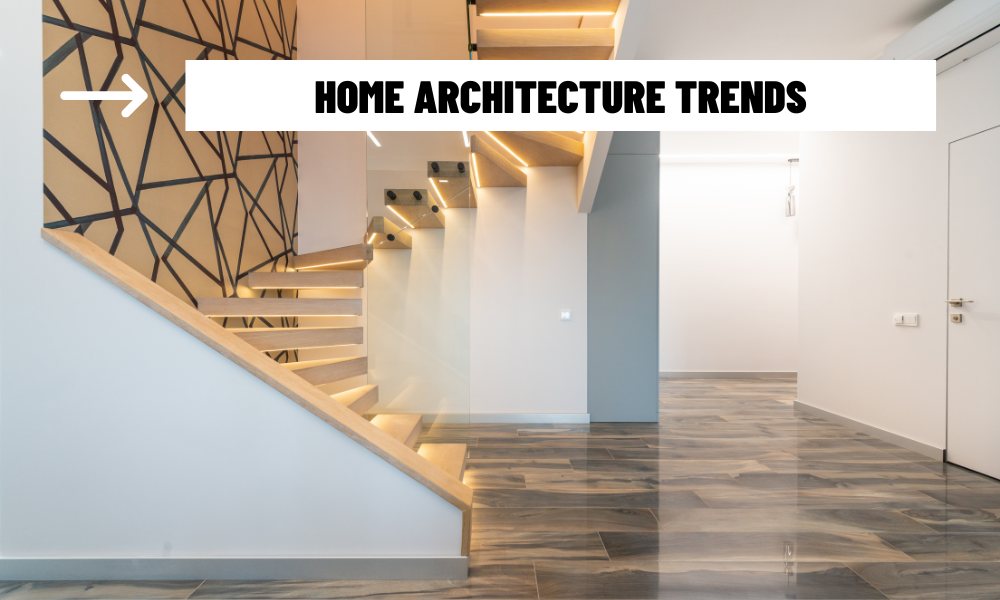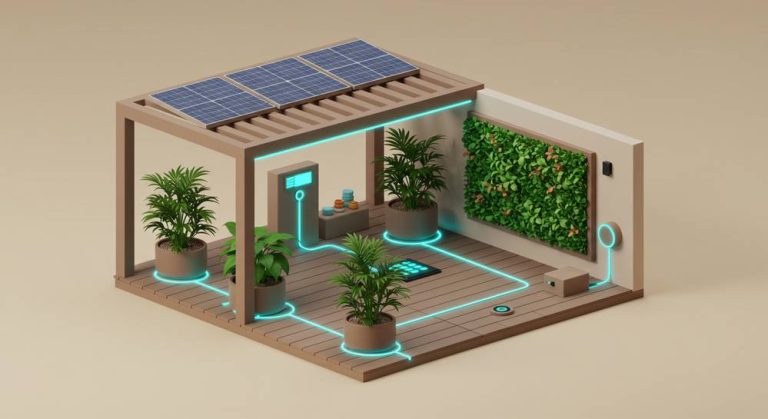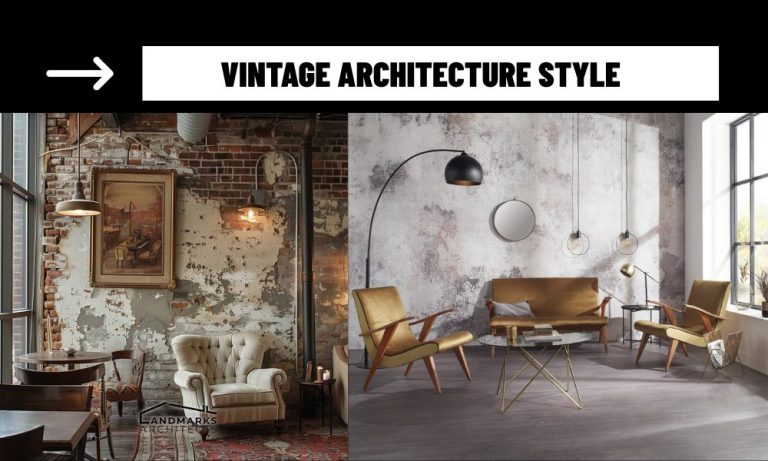The home is no longer just a place to live—it’s a reflection of personal values, technological advancements, and environmental responsibility. In 2025, home architecture trends are reshaping residential design with a focus on sustainability, functionality, and wellness. These trends cater to evolving lifestyles, blending cutting-edge technology with timeless aesthetics to create spaces that are both beautiful and practical.
Top Home Architecture Trends for 2025
The following trends are leading the charge in home architecture, offering innovative solutions for modern living:
1. Sustainable and Eco-Friendly Design
Sustainability is at the forefront of 2025’s home architecture trends. Homeowners are prioritizing materials and systems that reduce environmental impact. Key features include:
Recycled and Natural Materials: Reclaimed wood, bamboo, and recycled metal are popular for flooring, furniture, and structural elements.
Energy-Efficient Systems: Solar panels, geothermal heating, and high-performance insulation lower energy consumption.
Green Roofs and Walls: These enhance insulation, reduce runoff, and promote biodiversity, as seen in urban homes.
Why It Matters: With climate change concerns growing, sustainable designs appeal to eco-conscious homeowners seeking to lower their carbon footprint while saving on utility costs.
2. Open-Plan and Flexible Layouts
Open-plan living continues to dominate, with homes designed for fluidity and multifunctionality. Features include:
Minimal Walls: Large, open spaces connect kitchens, living rooms, and dining areas for seamless interaction.
Movable Partitions: Sliding doors or glass panels allow spaces to adapt for work, entertaining, or privacy.
Outdoor Integration: Floor-to-ceiling windows and sliding doors blur the line between indoor and outdoor spaces.
Why It Matters: Open layouts cater to remote work, family gatherings, and social lifestyles, offering versatility in how spaces are used.
3. Smart Home Technology
Smart homes are a cornerstone of 2025’s home architecture trends, integrating technology for convenience and efficiency. Key elements include:
Automation Systems: Control lighting, heating, and security via apps or voice assistants like Amazon Alexa or Google Home.
Energy Monitoring: Smart meters track usage, optimizing energy consumption.
Security Enhancements: Biometric locks and AI-powered cameras provide advanced safety.
Why It Matters: Smart technology enhances comfort, reduces costs, and aligns with the tech-savvy preferences of modern homeowners.
4. Biophilic Design
Biophilic design, which connects occupants with nature, is gaining traction. Features include:
Natural Elements: Indoor plants, living walls, and water features create calming environments.
Maximized Light: Skylights, clerestory windows, and glass walls flood homes with natural light.
Organic Materials: Stone, wood, and linen add tactile, earthy textures.
Why It Matters: Studies show biophilic design improves mental health, reduces stress, and enhances air quality, making it ideal for wellness-focused homes.
5. Minimalist and Functional Aesthetics
Minimalism remains a timeless trend, emphasizing simplicity and purpose. Characteristics include:
Clean Lines: Sleek furniture and architectural details create uncluttered spaces.
Neutral Palettes: Whites, grays, and earth tones provide a versatile backdrop.
Hidden Storage: Built-in cabinets and multi-functional furniture maximize space.
Why It Matters: Minimalist designs promote tranquility and are easy to maintain, appealing to busy homeowners.
6. Modular and Prefabricated Homes
Modular construction is revolutionizing homebuilding with its efficiency and affordability. Features include:
Pre-Fab Components: Factory-built modules are assembled on-site, reducing construction time.
Customizable Designs: Homeowners can tailor layouts and finishes to their needs.
Sustainable Practices: Modular homes use less waste and energy during construction.
Why It Matters: Modular homes offer cost-effective solutions for urban and rural settings, addressing housing shortages and budget constraints.

The Significance of These Trends
The home architecture trends of 2025 reflect broader societal shifts:
Environmental Awareness: Sustainable and modular designs address climate change and resource scarcity.
Technological Integration: Smart homes align with the rise of IoT (Internet of Things) and automation.
Health and Wellness: Biophilic and minimalist designs prioritize mental and physical well-being.
Economic Factors: Modular homes and open layouts cater to affordability and flexible lifestyles.
These trends are not just aesthetic—they’re practical responses to modern challenges, making homes more livable and future-proof.
Real-World Examples of Home Architecture Trends
Sustainable Homes: The Passive House movement, seen in projects like Germany’s Darmstadt House, uses ultra-efficient insulation and ventilation for near-zero energy use.
Smart Homes: Tesla’s Solar Roof homes integrate solar panels with smart energy systems, popular in California.
Biophilic Designs: Singapore’s Jewel Changi Airport residences inspire homes with lush greenery and natural light.
Modular Homes: Nestron’s Cube Two, a compact prefab home, offers customizable layouts for young professionals.
How to Incorporate These Trends Into Your Home
Ready to embrace home architecture trends? Here’s how to get started:
Adopt Sustainable Practices: Install solar panels, use low-VOC paints, or choose reclaimed wood furniture. Consult local suppliers for eco-friendly options.
Create Open Spaces: Remove non-load-bearing walls or add glass doors to enhance flow. Work with an architect to ensure structural integrity.
Integrate Smart Tech: Start with affordable devices like smart bulbs or thermostats. For larger projects, hire a home automation specialist.
Embrace Biophilia: Add a vertical garden, install skylights, or use natural stone accents. Visit botanical gardens for inspiration.
Go Minimalist: Declutter and invest in multi-functional furniture, like ottomans with storage. Use online design tools to plan layouts.
Explore Modular Options: Research prefab companies like IKEA’s BoKlok for affordable additions, such as backyard studios or guest houses.
Challenges and Considerations
While exciting, these trends come with challenges:
- Cost: Smart tech and sustainable materials can be expensive upfront, though they save money long-term.
- Space Limitations: Open layouts may not suit small homes or families needing privacy.
- Maintenance: Biophilic elements like living walls require regular care.
To overcome these, work with professionals to balance budget, space, and maintenance needs while achieving your design goals.
The home architecture trends of 2025 are transforming homes into sustainable, tech-savvy, and wellness-focused sanctuaries. From eco-friendly materials to modular construction and biophilic designs, these trends offer endless possibilities for creating spaces that are stylish, functional, and aligned with modern values. Whether you’re updating a single room or building a dream home, these ideas can help you stay ahead of the curve.
















